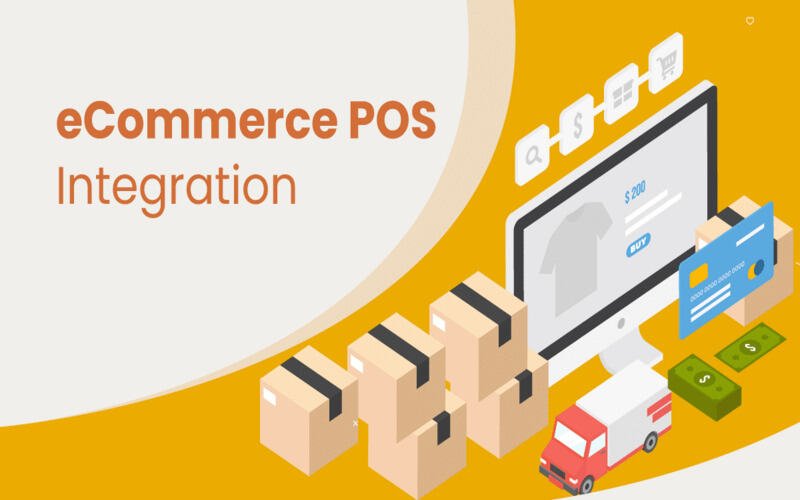In the rapidly evolving landscape of e-commerce, businesses must stay ahead of the curve to remain competitive. One of the most impactful innovations in recent years is the local e-commerce POS (Point of Sale) system. This technology not only streamlines operations but also enhances customer experience, driving both sales and satisfaction. In this article, we explore the myriad benefits of implementing a local e-commerce POS in your business and how it can transform your operations.
Understanding the Local E-commerce POS
Local ecommerce POS system is a hybrid solution that combines traditional point-of-sale functions with online e-commerce capabilities. Unlike conventional POS systems, which are limited to in-store transactions, a local e-commerce POS integrates seamlessly with your online store, providing a unified platform for managing sales, inventory, and customer data.
Key Features of a Local E-commerce POS
- Unified Inventory Management
- Real-time Updates: Synchronizes stock levels across all sales channels.
- Automated Reordering: Ensures you never run out of popular items.
- Accurate Reporting: Provides detailed insights into inventory movements.
- Integrated Payment Processing
- Multiple Payment Methods: Accepts credit cards, mobile payments, and more.
- Secure Transactions: Protects customer data with advanced encryption.
- Seamless Checkout: Reduces transaction time and improves customer experience.
- Comprehensive Sales Tracking
- Detailed Analytics: Tracks sales performance across different channels.
- Customizable Reports: Helps identify trends and make informed decisions.
- Sales Forecasting: Predicts future sales based on historical data.
- Customer Relationship Management (CRM)
- Personalized Marketing: Targets customers with tailored promotions.
- Loyalty Programs: Encourages repeat business through rewards and incentives.
- Customer Insights: Provides valuable data on purchasing behavior.
Benefits of Implementing a Local E-commerce POS
Enhanced Customer Experience
A local e-commerce POS system significantly enhances the customer experience by providing a seamless and consistent shopping journey across all touchpoints. Whether customers shop online or in-store, they enjoy a unified experience, which includes:
- Consistent Pricing and Promotions: Offers the same deals across all channels.
- Personalized Recommendations: Utilizes customer data to suggest relevant products.
- Effortless Returns and Exchanges: Simplifies the process regardless of purchase location.
Increased Operational Efficiency
By integrating your online and offline operations, a local e-commerce POS reduces the complexity of managing multiple sales channels. This leads to:
- Streamlined Processes: Automates routine tasks, freeing up staff to focus on customer service.
- Reduced Errors: Minimizes discrepancies in inventory and sales data.
- Improved Resource Allocation: Helps optimize staffing and stock levels based on real-time demand.
Data-Driven Decision Making
The wealth of data provided by a local e-commerce POS enables businesses to make more informed decisions. Key benefits include:
- Actionable Insights: Leverages data analytics to identify growth opportunities.
- Performance Monitoring: Tracks key metrics to gauge the success of marketing campaigns and sales strategies.
- Strategic Planning: Uses historical data to forecast trends and plan for the future.
Scalability and Flexibility
A local e-commerce POS system is designed to grow with your business. Whether you’re expanding your product line, opening new locations, or entering new markets, the system can scale to meet your needs. Key advantages include:
- Modular Design: Allows you to add new features and functionalities as required.
- Cloud-Based Solutions: Provides remote access to your POS system, enabling you to manage your business from anywhere.
- Customization Options: Tailors the system to fit your unique business requirements.
Implementing a Local E-commerce POS: Best Practices
To fully leverage the benefits of a local e-commerce POS, businesses should follow these best practices:
Choose the Right System
Selecting the right POS system is crucial. Consider factors such as:
- Compatibility: Ensure the system integrates with your existing software and hardware.
- User-Friendliness: Choose a system that is easy to use and requires minimal training.
- Support and Maintenance: Opt for a provider that offers robust support and regular updates.
Train Your Staff
Proper training is essential to maximize the effectiveness of your new POS system. Key training areas include:
- System Navigation: Teach staff how to use the system efficiently.
- Customer Service: Emphasize the importance of maintaining a high level of customer service during the transition.
- Troubleshooting: Equip staff with basic troubleshooting skills to handle common issues.
Monitor and Adjust
Regularly monitor the performance of your POS system and make adjustments as needed. Key actions include:
- Review Reports: Analyze sales and inventory reports to identify areas for improvement.
- Solicit Feedback: Gather feedback from staff and customers to identify pain points and areas for enhancement.
- Stay Updated: Keep up with the latest POS technology trends to ensure your system remains cutting-edge.
Conclusion
Implementing a local e-commerce POS system can revolutionize your business operations, providing a seamless, efficient, and data-driven approach to sales and customer management. By choosing the right system, training your staff, and continuously monitoring performance, you can unlock the full potential of this powerful technology.




The following time I read a blog, I hope that it doesnt disappoint me as much as this one. I imply, I know it was my option to learn, but I really thought youd have one thing attention-grabbing to say. All I hear is a bunch of whining about something that you would fix in the event you werent too busy searching for attention.
You made a number of good points there. I did a search on the issue and found the majority of people will have the same opinion with your blog.
войти в 1с через облако 1с клауд облако личный кабинет
Нужен вентилируемый фасад: подсистема для вентилируемого фасада цены
nyc shipping delivery new york city
Incredible! This blog looks just like my old one! It’s on a entirely different subject but it has pretty much the same layout and design. Outstanding choice of colors!
Great amazing things here. I am very satisfied to see your post. Thank you so much and i am looking forward to touch you. Will you kindly drop me a mail?
независимая оценка заказать оценку Москва
Thank you for the auspicious writeup. It in fact was a entertainment account it. Look complex to more added agreeable from you! By the way, how can we keep up a correspondence?
Hello, Neat post. There’s a problem together with your web site in internet explorer, may check this… IE nonetheless is the market leader and a large section of other folks will miss your fantastic writing because of this problem.
server host vps vps hosting
кресло для косметолога столик косметолога на колесиках купить
бетон саратов https://beton-saratov64.ru
best stack of supplements for gaining muscle
References:
Winstrol Pill, Gitlab.Dev.Jtyjy.Com,